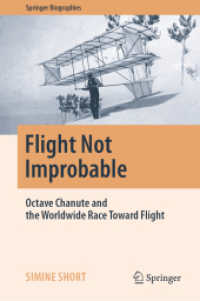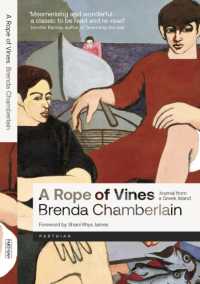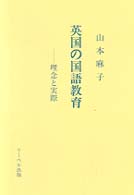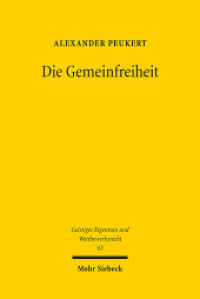- ホーム
- > 洋書
- > ドイツ書
- > Humanities, Arts & Music
- > Linguistics
- > general surveys & lexicons
Description
(Short description)
Bild-Text-Verbindungen als Mittel frühneuzeitlicher Wissensarchivierung.
(Text)
By combining images or pictures with texts, mnemonic and emblematic art generate and store knowledge, and they constituted the essential forms of early modern knowledge culture. Their reception over long periods of time created a link between the content, images and words and thus generated new topoi; the messages of emblematic or mnemonic images are recognised in their respective combinations, and these set, complex codifications become an integral part of cultural knowledge. At the same time, this form of knowledge linking by combining image and text forms the basis for the way emblematic and mnemonic art functions. While their approaches differ, their text-image combinations serve the same interests and societal demands: the arrangement, organisation, and storage of information. It is the aim of this monography, which covers the period from the 15th to the 18th century, to describe the underlying rules of correlation systematically and chronologically.
(Text)
By combining images or pictures with texts, mnemonic and emblematic art generate and store knowledge, and they constituted the essential forms of early modern knowledge culture. Their reception over long periods of time created a link between the content, images and words and thus generated new topoi; the messages of emblematic or mnemonic images are recognised in their respective combinations, and these set, complex codifications become an integral part of cultural knowledge. At the same time, this form of knowledge linking by combining image and text forms the basis for the way emblematic and mnemonic art functions. While their approaches differ, their text-image combinations serve the same interests and societal demands: the arrangement, organisation, and storage of information. It is the aim of this monography, which covers the period from the 15th to the 18th century, to describe the underlying rules of correlation systematically and chronologically.
(Author portrait)
Prof. Dr. Ursula Kocher lehrt Allgemeine Literaturwissenschaft an der Universität Wuppertal.Kocher, Ursula
Prof. Dr. Ursula Kocher lehrt Allgemeine Literaturwissenschaft an der Universität Wuppertal.








